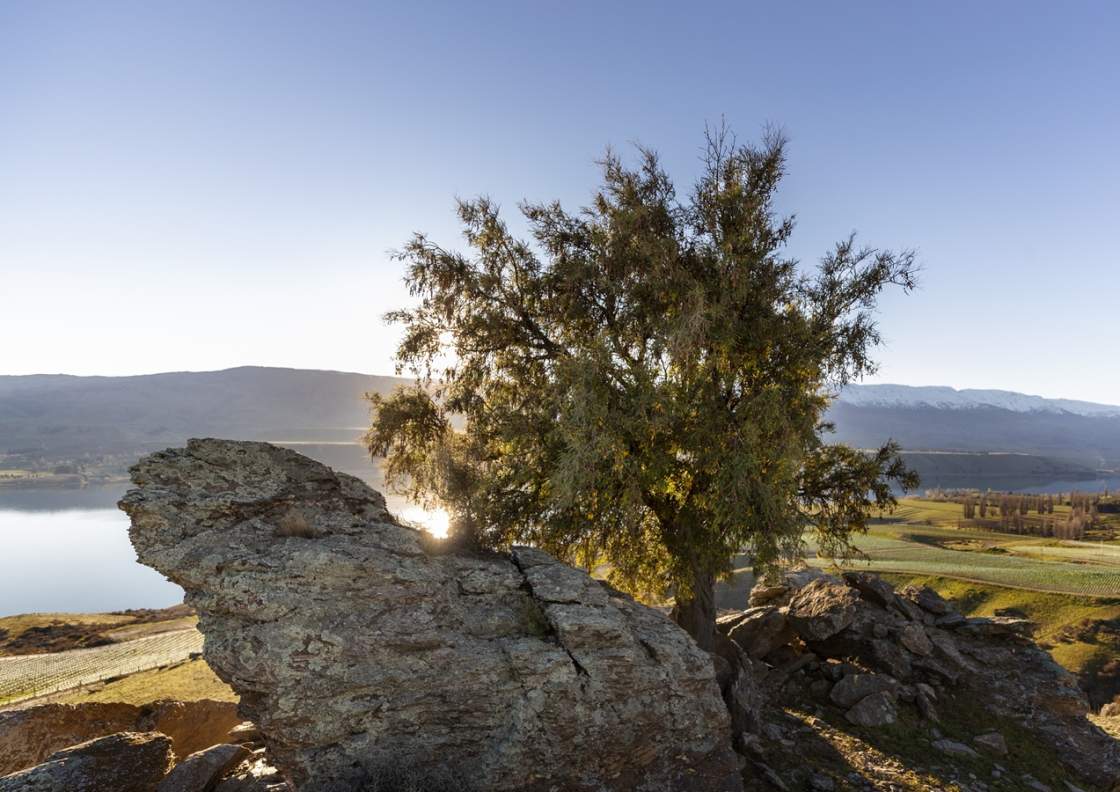Seeds we plant today will blossom for future generations
Like most great tales, Te Kano is a love story. Rhonda Lloyd fell in love with a New Zealander and during trips back to NZ, their mutual love of Central Otago’s wines grew into a passion and when the opportunity came to purchase outstanding vineyard land they didn’t hesitate.
Northburn is the largest of their four vineyards, an extensive Kōwhai regeneration project is taking place here using seed harvested from an ancient ancestor tree that grows on the slopes above the vineyard. This tree forms the basis of the Te Kano values. It also provides the inspiration for an ambitious project – to clear the Northburn site of invasive pests and regenerate the landscape using plants grown on site, including seed from this very tree. Their desire to restore the Kōwhai that once thrived there, inspired a move towards organic agriculture and a softer approach to farming.
To date they have propagated over 5000 native plants on site, including 900 Kōwhai, and cleared over 50 hectares of invasive plant species. Their goal is to leave a different sort of footprint, with a restorative and regenerative approach to agriculture and a focus on leaving the land better than they found it.

“A commitment to the earth beneath and the future beyond”
Hidden amongst the rocks are the famous herringbone tailings unique to this part of Otago.
Significant value was placed on these cultural remains during the original site development. The vineyard grew around them, the old mine workings scattered amongst the blocks of vines and now carefully fenced to protect these precious remnants of Central Otago history.
Back at the Cellar Door
Amongst the vines, cantilevered out across the incredible landscape of the Kawarau River and looking out to the mountains beyond, the cellar door is the perfect way to experience Te Kano. Local architectural firm Mason and Wales delivered on the brief to highlight the beauty of the surrounding environment while staying true to the Te Kano vision of a sustainable project.
Using repurposed shipping containers to cantilever the building from the existing landform, along with untreated external materials and sustainable interior fittings, they created a bold statement which has won acclaim from competition judges and visitors alike.

Their commitment to conservation includes cultural preservation, an ethos that has inspired the curation of New Zealand artworks in the cellar door. This welcoming space invites you to linger on the terrace or build your own picnic surrounded by their collection of beautiful artworks.
Walking and biking trails run through the property, an opportunity for visitors to further immerse themselves within the unique landscape of this special area.


